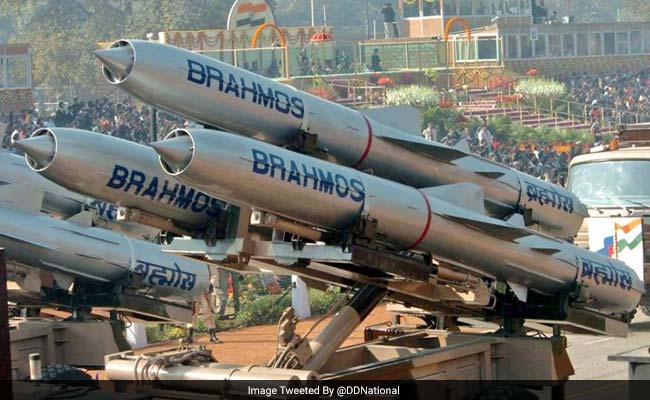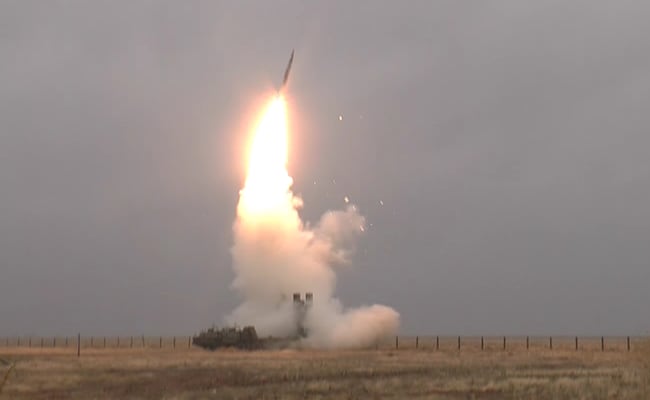- India should prepare for multi-domain and multi-front war beyond conventional two-front scenarios
- China and Pakistan acted jointly, demonstrating conjoined operations across multiple domains
- Air Chief Marshal (retired) highlighted the use of air power without escalation to achieve strategic effects
The former chiefs of all the three armed services have highlighted the need for looking at not only a two-front war scenario, but across all domains - air, land and sea - in multiple fronts.
At the NDTV Defence Summit 2025, former Chief of the Naval Staff Admiral Arun Prakash (retired) gave the example of Operation Sindoor as a "great learning lesson for all of us."
"The last major war that we fought was in 1971, so between then and 2025, there has been at least two quantum jumps in technology - battlefield transparency and networking, and the range of sensors and weapons. So Operation Sindoor was itself a learning lesson for the armed forces," Admiral Prakash said.
"... We struck, our intelligence was good, we struck deep into enemy territory, the precision of our weapons was excellent, we hit targets that we wanted to, the coordination between the three services was as required... So when the next round comes I am sure all the lessons learned from this phase of [Operation] Sindoor will be applied," he said.
On the role of China, former Chief of the Army Staff General Manoj Pande (retired) said the events of Operation Sindoor clearly proved that both China and Pakistan are "conjoined".
"I think one of the important lessons for us was as to how, so far we used to say that look China would assist Pakistan during operations, during a conflict, etc. But I think this time it came out loud and clear that it is more like they are conjoined," General Pande said.

"It was more than supply of equipment, weapon system, etc. You saw them operate together, their SOPs [standard operating procedure], their methods of operation. This is something which we will have to factor as we go forward and maybe study more in depth to figure out what this would mean," the former Indian Army chief said.
"It is no longer two fronts; you have one adversary, but you have both of them together. This is across all domains, in the ground domain, in the air domain, as also in the maritime, less so. But this is something which we will have to study in great detail," he added.
General Pande said the armed forces have always factored this angle in war games.
"In military parlance we would call it collusivity and how would that manifest. So this was something which was already planned and I'm sure our field formation commanders would have sort of taken measures and they did take measures to make sure that while we are engaged with an adversary on one side, things remain quiet or you remain balanced on the other side," General Pande said.
Former Chief of the Air Staff Air Chief Marshal Vivek Ram Chaudhari (retired) said one of the takeaways from Operation Sindoor was that air power need not be escalatory.
"This operation has busted the myth that use of only air power for offensive action will escalate the conflict. We can definitely control the use of air power for gaining strategic objectives, for pinpoint accuracy, and to create effects that will change the balance of equations between nations," Air Chief Marshal Chaudhari said.

He also agreed with the broad assessments by General Pande and Admiral Prakash on the lessons learnt from Operation Sindoor.
"There's no end to having a wishlist for what we should have had and what we should bid for in future to make ourselves more potent against adversaries. And like General Pande brought out, the asymmetry brought by collusivity is something we have to comprehend and prepare ourselves against," the former Indian Air Force (IAF) chief said.
"The Admiral also brought out two or three key issues. One is increased battlefield transparency through better sensors, better networking, and having longer-range weapons, whether surface-to-air or air-to-ground and so on. So like I said, the list can be endless, but primarily these are three or four factors which we think we should have been much stronger at that time and we should bid for better equipment and better hardware in future," Air Chief Marshal Chaudhari said.
India launched Operation Sindoor days after Pakistan-linked terrorists killed 26 tourists in Jammu and Kashmir's Pahalgam. The BrahMos missile strikes deep inside Pakistan and Pakistan-Occupied Kashmir (PoK) was an absolute success with the destruction of high-value terror launchpads.
The targets belonged to Lashkar-e-Taiba (LeT), Jaish-e-Mohammed (JeM), and Hizbul Mujahideen. The locations were identified as key training and operational centres for planning attacks against India. India also left the Pakistani Air Force (PAF) handicapped after the first few strikes on their critical assets including advanced air defence network and airborne warning systems.
Track Latest News Live on NDTV.com and get news updates from India and around the world

